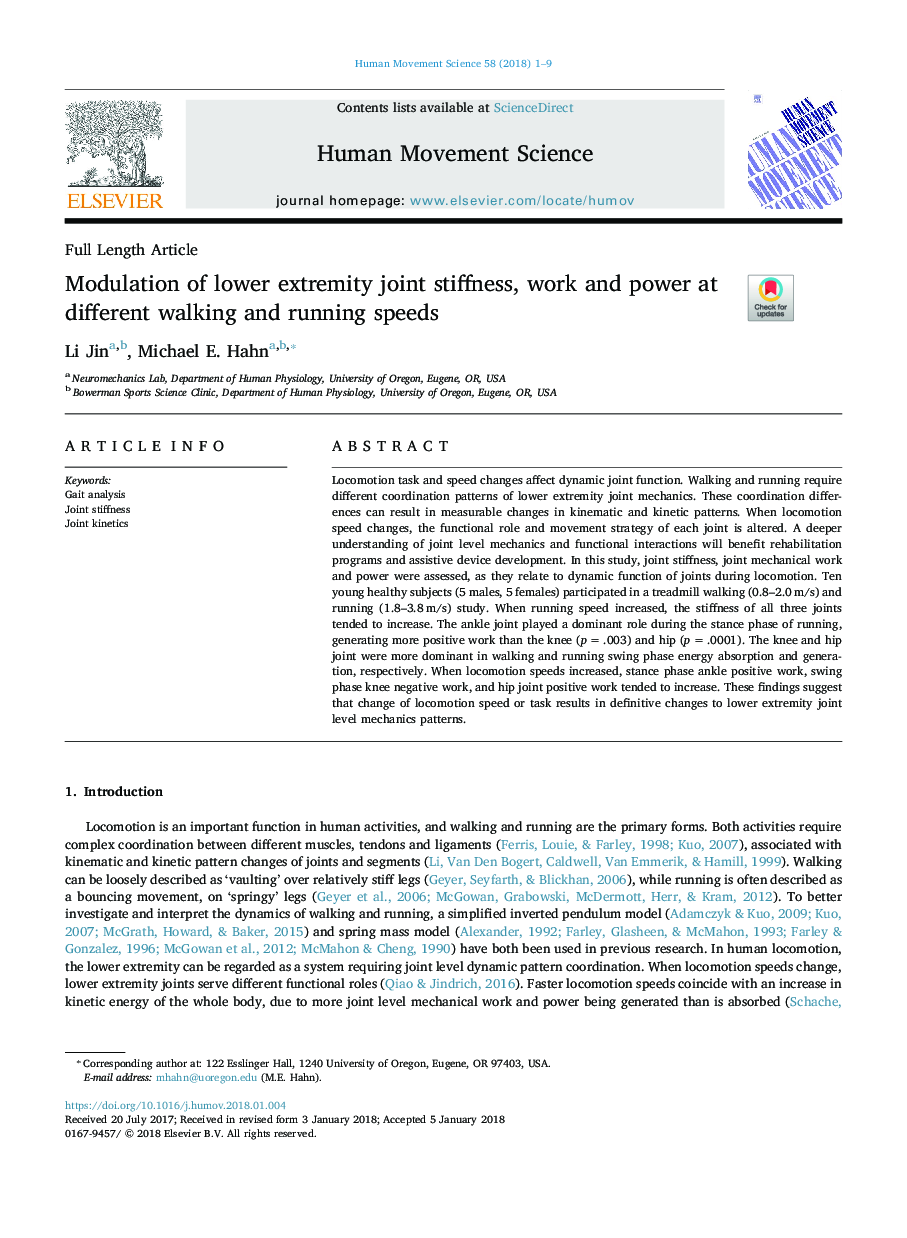| کد مقاله | کد نشریه | سال انتشار | مقاله انگلیسی | نسخه تمام متن |
|---|---|---|---|---|
| 7290903 | 1474206 | 2018 | 9 صفحه PDF | دانلود رایگان |
عنوان انگلیسی مقاله ISI
Modulation of lower extremity joint stiffness, work and power at different walking and running speeds
ترجمه فارسی عنوان
مدولاسیون سفتی مفاصل اندام تحتانی، کار و قدرت در سرعت های مختلف پیاده روی و سرعت حرکت
دانلود مقاله + سفارش ترجمه
دانلود مقاله ISI انگلیسی
رایگان برای ایرانیان
کلمات کلیدی
تحلیل ظاهر، سختی مشترک سینتیک مشترک،
موضوعات مرتبط
علوم زیستی و بیوفناوری
علم عصب شناسی
علوم اعصاب شناختی
چکیده انگلیسی
Locomotion task and speed changes affect dynamic joint function. Walking and running require different coordination patterns of lower extremity joint mechanics. These coordination differences can result in measurable changes in kinematic and kinetic patterns. When locomotion speed changes, the functional role and movement strategy of each joint is altered. A deeper understanding of joint level mechanics and functional interactions will benefit rehabilitation programs and assistive device development. In this study, joint stiffness, joint mechanical work and power were assessed, as they relate to dynamic function of joints during locomotion. Ten young healthy subjects (5 males, 5 females) participated in a treadmill walking (0.8-2.0â¯m/s) and running (1.8-3.8â¯m/s) study. When running speed increased, the stiffness of all three joints tended to increase. The ankle joint played a dominant role during the stance phase of running, generating more positive work than the knee (pâ¯=â¯.003) and hip (pâ¯=â¯.0001). The knee and hip joint were more dominant in walking and running swing phase energy absorption and generation, respectively. When locomotion speeds increased, stance phase ankle positive work, swing phase knee negative work, and hip joint positive work tended to increase. These findings suggest that change of locomotion speed or task results in definitive changes to lower extremity joint level mechanics patterns.
ناشر
Database: Elsevier - ScienceDirect (ساینس دایرکت)
Journal: Human Movement Science - Volume 58, April 2018, Pages 1-9
Journal: Human Movement Science - Volume 58, April 2018, Pages 1-9
نویسندگان
Li Jin, Michael E. Hahn,
